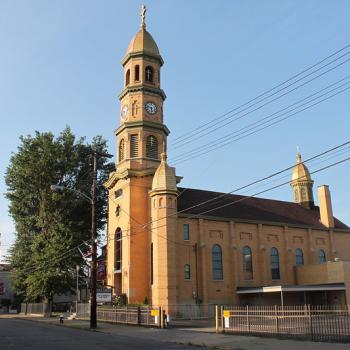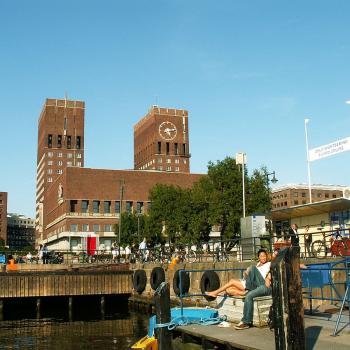First, the state is given “supreme authority.” It may “let” lower authorities handle issues when those authorities are capable of dealing with them, but only then. The graduation of power is intended to the common good and is not in itself the ultimate good. Insofar as Catholics accept the particularity of God’s grace and the necessity of community in human life, lower orders are encouraged to handle all that they can, but, again, what they can handle will vary from period to period (and here the overarching concern is clearly increasing respect for the dignity of workers, which will be important to keep in mind).
This brings us to my second point about whence Pius’ usage of the term emerges: medieval feudalism. This is not to say that Pius was a medieval, nor that somehow he actually meant that we should have manors and knights. Rather, it is important to keep in mind the Church’s long-standing mistrust of American republicanism, not to mention the fact that feudalism effectively existed throughout most of Europe (whether peasants were “properly” serfs or not) until the 19th century, and in some places, into the 20th. Michael Haneke makes this clear in his haunting (and enchanting) film, The White Ribbon (about a north German village and its local baron in 1913-1914). This is why, in the 19th century, Marx could still write about peasant landholders (in essence, U.S. Southern sharecropping was effectively a belated and non-overtly-aristocratic form of feudal land tenure).
Subsidiarity thus has its basis not in American-style federalism, but in the overlapping and often devolved medieval modes of landholding and politics. Villagers farmed a common green; local lords dealt with local problems with (as time went on) more frequent visits from central governmental officials (the emergence of “true” last names in the 14th century has to do with the need to keep more detailed tax records, as bureaucracies became more sophisticated and feudalism, at least in its most “pristine” form, began to wane).
What’s key here, however, is that, even as feudalism left quite a mark, and many responsibilities remained local, governments did become increasingly centralized. Why? To be reductive (but, to my mind also essentially correct): capitalism, or, to put it more accurately, the development of an enriched merchant class within deeply disparate, often colonial, states and empires. The causes of the change were complex, but Chris Harman, in an insightful piece on the topic, outlines the following primary changes:
Before the argument can begin it is necessary to spell out what the ’transition’ was about. There has been a tendency in the recent discussions among Marxists to see it in terms of the change from the organisation of society (or at least of the economy) of the 14th century to that of the late 18th century. But the scale of the ’transition’ is best grasped by comparing feudalism in its ’classic’ form, that of the 10th century, with capitalism in its classic form, that of the late 19th and early 20th centuries.
Tenth century feudalism was an overwhelmingly rural society. Almost the whole of the population lived off the land, in more or less self contained manorial villages. Control of each manor lay with the feudal lord – either a warrior or an ecclesiastical body – exercising political and juridical as well as economic power in the locality. The mass of peasants were serfs, unable to leave the manor, where they tilled strips of land for themselves but also provided for the livelihood of the feudal lord, either by forced labour on his estate (‘demesne’) or by payment of rent in kind. Money played very little role in rural life, with the feudal lords using serf labour to produce non-agricultural produce in demesne workshops.
Towns were few, far between and small, with many town dwellers themselves tilling plots for part of their livelihood. Trade was carried out by despised travelling peddlers who provided those few essential goods (for instance, salt) which the local serfs could not produce. Because land was the only source of substantial wealth, control of it was the motive force behind the behaviour of the ruling class – and the cause of repeated armed conflicts within it.
The feudal lord exploited the peasants, often forcing them into abject poverty. Yet he could not exploit in order to amass profits. The aim of production was consumption (including conspicuous consumption), not accumulation. As Marx put it, ‘the limits to the exploitation of the feudal serf were determined by the walls of the stomach of the feudal lord’.
Contrast capitalism at its height. Urban life dominates, so that even owners of agricultural land are based in towns. The great majority of the population work in industry or ‘services’. Money plays an absolutely central role. Everyone depends on selling something in order to get the means of livelihood – even if all most people have to sell is their labour power. Most importantly, there is no limit to the accumulation of wealth. Everything can be turned into money and members of the ruling class can own endless amounts of money. What drives the system forward is not the consumption of the ruling class, but what Marx called self-expansion of capital, the endless pursuit of accumulation for the sake of accumulation.
Thus subsidiarity was, in many senses, an attempt by the Church to carve out room for traditional spheres of independence over and against the tentacles of the modern state (animated as it was by the need to increase trade, valorize capital, and generally spread the central tenets of European liberalism). In this sense, subsidiarity itself was a way of combating, not of abetting, the liberalism that lies behind the libertarian understanding of American federalism.
As capitalism has changed thus so too have the demands of subsidiarity. Can my municipal or my state government actually claim the ability to regulate successfully contemporary finance capital such that the dignity of workers (emphasized by Pius) is protected? Can these levels of government guarantee protection for the poor and destitute, who, by definition are our primary concern within Catholic Social Teaching?













